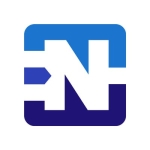What is our primary use case?
We had implemented two SRXs in high availability mode. They were used, generally, for firewall and NAT translation tables, for forwarding for services, and connecting branch offices. We have a constant internet connection, which is directly connected with the branch offices, in general. We didn't explicitly configure or use any specific SRX features regarding the filtering of URLs or something that a UTM could use, since Juniper has a more advanced configuration and, in general, a UI that's made for the customer.
What is most valuable?
The solution is mostly stable.
We get technical support via the reseller, and they are very helpful.
You can scale the solution.
The solution works well for larger organizations.
What needs improvement?
We've had some issues with the firmware.
The solution is quite advanced. You need a lot of training to use it effectively.
When we bought the equipment, and we have more Juniper devices, not just SRX, they started to malfunction. I'm not sure why. All the devices that we bought were from the year 2018. We had the EX4600. Something was not working with this device. It was offline. We bought everything in twos so we could make a high availability with all of them. The current has malfunctioned, and all the warranties have also expired. We are, generally, expecting malfunctioning, maybe in the next few years. I was planning to switch the Juniper equipment with something else to avoid this.
It does not have a simple user interface.
The warranty offered on the devices isn't long enough. it would be better if you could extend it out to five or eight years. Otherwise, you have to be very careful with the equipment.
I'm not sure if Juniper SRX can filter emails or block viruses. I'm not familiar with these aspects as I haven't had that much experience using the SRX inside the UI. However, if they do not, it would be ideal if they did. I'm not sure if it can deflect any kind of DDoS attack.
The one particular issue that I've seen on the SRX, is if you have SSH enabled and if there is a large number of SSH connections, when a brute force attack happens, the SRX, in general, tends to become unstable, or it resets by itself. That's one issue that's particularly making me angry, and I had to request the reseller to block the SSH permanently, or just to allow access, so only they can connect.
For how long have I used the solution?
Juniper SRX was implemented in our company at the start of 2018.
What do I think about the stability of the solution?
While the solution has been running stable, one device has also malfunctioned. We had some issues with Juniper in general. It was regarding the firmware and some box, or something like that. We've needed to contact our reseller more frequently to fix the issues that are occurring when using the device.
Regarding stability, it's pretty much working in a stable way. I haven't had any issues regarding, let's say, speeds or connectivity or general day-to-day use, when users connected on the switches and accessing the internet, and so on. That said, sometimes with the devices, strange issues happen.
What do I think about the scalability of the solution?
Regarding scalability, generally, it is simple, I would say, at least from my perspective. I wasn't the person that configured the devices, however. The reseller was.
Before the Corona crisis, there were 250 users. Now we've got maybe 90 to 100 people.
How are customer service and technical support?
We generally contact the reseller that sold us the device and also has a maintenance protocol. We have services on-demand when some issues arise and we need help.
The reseller was pretty good regarding ticket issues, management, or making modifications, even during the production time. They are really trusted people, and a trusted IT company, and they've expertly managed all the requirements that I've sent them or any other modification on the network that I wanted to have.
Which solution did I use previously and why did I switch?
I've used Cyber and a Sophos UTM device. Juniper is, generally, more advanced. I haven't been able to get enough training to maintain the Juniper device.
The main reason we chose Juniper was the stability, and the number of concrete connections that users can make when, let's say, they going out to the internet, and accessing services over the internet. Also, regarding the network port-forwarding to internal servers, in services, the device that we had before was Cyberoam UTM, and it didn't quite handle the high load. I generally noticed that SRX can handle pretty high network loads when going in or out. It's proven itself to be stable in that regard.
How was the initial setup?
The initial setup was generally handled by the reseller and they did the setup as described on the schematic and regarding core network configuration, high availability, security, firewalls, et cetera. It was, generally, out of the box when it was configured and set up from the ground up.
While the setup was planned in 2017, it was up and running in 2018. It took about six months or so.
We switched office buildings, the main office. The new office was built with this solution. Everything was migrated, including all the network devices, all the servers, all the ISP, internet connections, and so on. Everything was, generally, carefully planned when it was deployed.
Our reseller also handles the maintenance. Generally, that takes one or two people.
What about the implementation team?
Our reseller partner handled the initial setup for the most part.
What's my experience with pricing, setup cost, and licensing?
I can't speak to the licensing. It's not an aspect I handle directly. I can't say that there are extra costs involved beyond the licensing fee.
Which other solutions did I evaluate?
We are currently using Juniper SRX, however, I was thinking about maybe changing the devices to FortiGate or a UTM device.
Lately I was thinking about simplifying. Maybe FortiGate might have something more user-friendly for the end-user or for the customer experience.
What other advice do I have?
I'm just a customer and an end-user.
We are using the SRX Model 345. It's a physical device. It's not a virtual instance.
In general, I wouldn't recommend Juniper to, for example, a small business. I would maybe recommend it to a bigger company. We might have made a mistake taking Juniper. Maybe we should have used something more user-friendly.
I would recommend it to a company that has more than 250 people. Or maybe even over 300. For a smaller company, it's not financially, efficient in the long-term, in terms of subscriptions or maintenance costs and similar things. A company that uses high-grade enterprise equipment, should be really financially equipped to handle such things.
It's highly advanced, at least for me. I would really need some training to at least handle some basic things, or maintenance, or even Firmware upgrading or high availability configurations. It's too advanced for me. I would really need to have some kind of network specialist certificate to manage them.
I would be really worried about the warranty as a new user as well. You really need to keep the subscriptions up to date, or not to stop them. If you've stopped them, you also need to pay penalties for the years that the subscriptions weren't used.
Regarding equipment, you really need to have them in twos, not one. You need to have high availability for all of them. The equipment tends to malfunction, specifically if there are any power issues inside the building, or if there isn't any generator or UPS underneath, and so on. The equipment really needs to be taken care of.
I'd rate the solution at an eight out of ten.
Disclosure: My company does not have a business relationship with this vendor other than being a customer.












